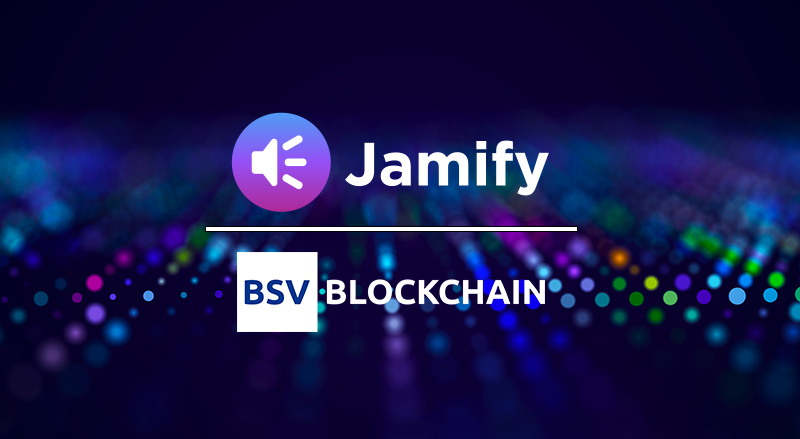The music industry has long been plagued by challenges faced by artists, including limited control over their creative works and disproportionate distribution of revenue.
To address these issues and establish a direct connection between creators and their fans, Luke Rohenaz, CEO of TonicPow, has developed Jamify—an innovative music player, which uses NFTs (Non Fungible Tokens) as a medium for music data. By leveraging the power of blockchain technology, Jamify aims to “free the music” and revolutionise the industry.
Problems in the music industry
The traditional music industry structure often favours major record labels and streaming platforms, leaving artists with limited control and a smaller share of the revenue. There are several reasons for this, including:
- Lack of transparency in accounting;
- missing clarity in contracts;
- disproportionate distribution of earnings;
- Limited auditing.
Additionally, emerging artists struggle to gain recognition and monetise their work effectively. Often, both labels and music platforms focus on the most popular artists that bring them the most profit. This is one of the reasons why small artists are left out. They do not receive a fair share of the profits, even if they receive a relatively large number of plays.
Existing solutions have not fully resolved these challenges, creating a need for a platform that empowers artists while providing an enhanced experience for consumers.
Creating accountability and clear distribution rules
By being built on the BSV blockchain, Jamify creates transparency and accountability for artists and their partners. Blockchain technology provides a decentralised and immutable ledger, ensuring transparency in accounting and royalty tracking. Artists can have a clear view of their earnings and verify the accuracy of transactions, eliminating the need to rely solely on labels for accounting.
Artists and their partners can track and verify royalty payments, ensuring that they are being accurately compensated. This increased accountability discourages potential manipulation and fosters trust between artists and industry stakeholders.
Furthermore, smart contracts can be integrated into the platform, allowing for transparent and automated agreements between artists and labels. Blockchain-based platforms can implement more equitable revenue-sharing models.
Smart contracts can automatically distribute earnings to various stakeholders, including artists, labels, songwriters, and producers, based on predefined terms. This ensures a fairer distribution of revenue, addressing the issue of disproportionate earnings.
Better fan engagement through exclusive digital content
NFTs can serve as unique digital assets representing music or other creative works. Artists can tokenise their creations, sell them directly to fans, and retain more control over their intellectual property. This empowers emerging artists to monetise their work effectively, gain recognition, and build a dedicated fan base, without solely relying on major labels or streaming platforms.
This also enhances the fan experience, as fans can have direct access to exclusive content, limited edition releases, and personalised experiences through NFTs. This strengthens the connection between artists and fans, creating new revenue streams and fostering a more engaging music ecosystem.
What the user experience could look like in practice
In a real-life scenario, let’s consider an emerging artist named Sarah. Using Jamify, Sarah releases her latest single as an NFT on the platform. Fans can discover her music, stream it for free, and engage with her community.
Sarah offers exclusive NFTs that provide special benefits, such as direct communication with her fans or access to a private virtual concert in the metaverse. Fans can support Sarah by purchasing her NFTs and owning a unique piece of her musical journey.
For a demonstration of Jamify, you could also check out our Blockchain Hustlers series, where we featured Rohenaz and Jamify.
Technical requirements for Jamify
Implementing Jamify requires integration with the BSV blockchain to tokenise songs as NFTs. Music data can be stored on-chain, while the NFTs represent the rights to stream that content. As BSV is a secure and scalable infrastructure, applications built on the blockchain inherit these features, which are necessary to ensure the smooth operation of the platform.
The most important factor for choosing the BSV blockchain is, however, scale. The scalability of BSV ensures that all transactions remain cost-effective. A transaction on the BSV blockchain costs a fraction of a cent and is near-instant. This makes streaming on Jamify not only efficient but also much cheaper than through existing platforms.
Jamify is set up to innovate music streaming
Jamify’s innovative use of blockchain technology in the form of NFTs presents a groundbreaking solution to the challenges faced by artists in the music industry. By empowering creators, providing direct fan engagement, and leveraging the unique features of the BSV blockchain, Jamify disrupts traditional revenue models and unlocks new opportunities for the music community.
As the popularity of NFTs continues to grow, Jamify stands at the forefront, transforming the way music is consumed, shared, and monetised. Further research and implementation of such solutions are recommended to foster a more equitable and artist-centric music industry.
If you want to learn more about Jamify or give the platform a try for yourself, here’s the official Jamify website.
